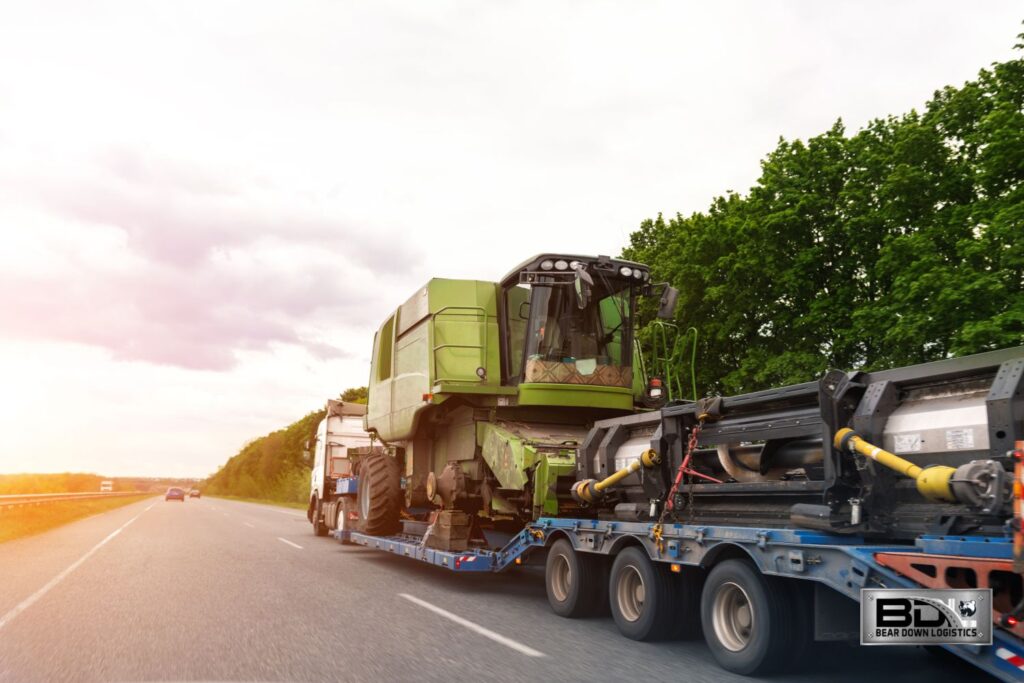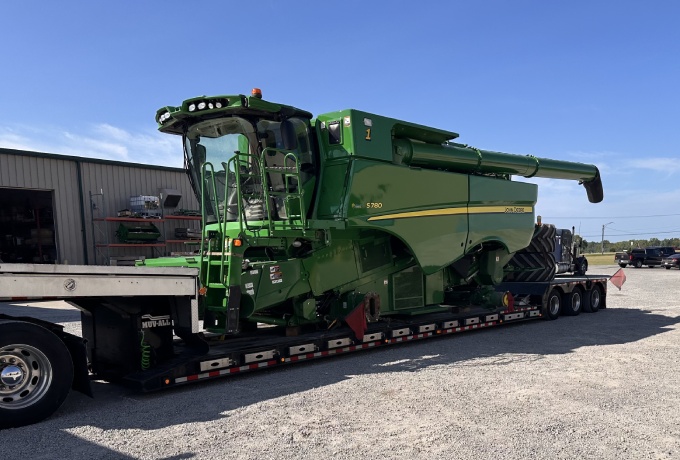Transporting large agricultural machinery requires a high level of expertise, planning, and precision. Combine harvesters, in particular, are among the most challenging machines to move because of their size, weight, and specialized design. Farmers and agribusinesses often rely on professional logistics partners to ensure these machines are delivered safely and efficiently. Companies such as Bear Down Logistic provide reliable solutions that focus on safety, efficiency, and precision throughout the entire process. In the middle of this process, Combine Harvesters Transport Services play a vital role in bridging the gap between agricultural productivity and the logistics required to support it. Understanding each stage helps equipment owners and operators appreciate the complexity of the process while ensuring that their valuable machinery reaches its destination intact and ready for use.
Pre-Transport Planning and Assessment
Successful transport begins with thorough planning. A detailed assessment of the harvester’s dimensions, weight, and special requirements is essential to determine the most suitable type of trailer and route. This stage often involves evaluating whether the equipment can be partially disassembled, such as removing headers or extensions, to make it easier and safer to transport. The route assessment considers factors like bridge clearances, road width, and traffic regulations. In some cases, transporters must plan around weather conditions, seasonal farming activity, or construction zones that may restrict movement. This careful preparation minimizes risks and ensures smoother operations once the journey begins.

Specialized Equipment Selection
Transporting large machinery requires the right vehicles and trailers. Lowboy trailers, step-deck trailers, and extendable flatbeds are commonly used to handle the weight and bulk of combine harvesters. Each trailer type offers different advantages, depending on the specific model being transported. For example, lowboys are ideal for heavy loads due to their lower deck height, which allows taller machines to fit within legal height limits. Step-deck trailers provide versatility for machines with awkward dimensions, while flatbeds may be used for attachments and accessories. Choosing the proper equipment is critical to ensuring both safety and compliance.
Disassembly and Preparation of the Harvester
Combine harvesters are often too large to be transported in one piece. To make the process more efficient and compliant with road restrictions, certain components may be removed before loading. Headers, augers, or wheels are sometimes detached and either secured alongside the machine or transported separately. This preparation step ensures the equipment fits securely on the trailer and reduces the risk of damage during transit. All detachable parts must be properly labeled, secured, and documented to avoid confusion when reassembling at the destination.
Loading and Securing the Machinery
Loading is one of the most delicate and critical stages in combine harvester transport. Using ramps, cranes, or specialized loading equipment, the machine is carefully positioned on the trailer. Once in place, it must be secured with heavy-duty chains, straps, and binders to prevent shifting during movement. Safety standards require that each attachment point is checked and reinforced. The weight must be evenly distributed across the trailer to avoid balance issues, which could lead to accidents or delays on the road. A final inspection of all securing mechanisms ensures the harvester is stable and ready for transport.
Regulatory Compliance and Permits
Oversized agricultural equipment often requires special permits before being moved on public roads. Transporters must comply with state, regional, or national regulations governing maximum height, width, and weight limits. In some cases, escort vehicles are mandated to accompany the load, ensuring safety for both the transport crew and other road users. Proper documentation, such as route maps, permits, and insurance papers, must be in order before departure. Compliance not only avoids legal issues but also guarantees a smoother journey without unnecessary interruptions.
Safety Measures During Transit
During transport, safety remains a top priority. Drivers must be trained in handling oversized loads and skilled at maneuvering through challenging road conditions. Continuous monitoring is crucial to ensure that the machinery remains securely fastened. Additional precautions may include avoiding high-traffic hours, monitoring weather forecasts, and using escort vehicles where required. These measures minimize risks, protect the harvester, and safeguard other motorists on the road.
Communication and Tracking
Modern transport services often include real-time tracking systems, allowing clients to monitor the location of their equipment throughout the journey. Clear communication between drivers, dispatchers, and clients ensures transparency and efficiency. This step is particularly valuable for time-sensitive deliveries, as farmers depend on their harvesters being available at the right time for seasonal operations. Accurate updates help eliminate uncertainty and provide peace of mind.
Delivery and Offloading
The final step in the process is the safe unloading of the harvester at its destination. Just as with loading, this requires precision and the use of the right equipment. Once offloaded, the machine is inspected for any damage and, if applicable, reassembled. Professional teams handle this phase with the same care and attention as earlier steps, ensuring the harvester is delivered in working condition. Proper documentation and handover procedures complete the process, providing the client with confidence in the successful transport of their equipment.
Key Points to Remember
Careful planning and thorough route assessment are essential to ensure a smooth and safe journey for oversized agricultural machinery. Choosing specialized trailers designed for the unique dimensions of each harvester is equally important to maintain stability during transit. In many cases, partial disassembly of the machine may be required to comply with road restrictions and make the equipment easier to transport. Finally, secure loading practices and strict adherence to regulatory requirements are critical for safeguarding the machinery and ensuring a compliant transport process.
Importance of Professional Expertise
Combine harvesters represent a significant investment for any agricultural business. Entrusting their transport to experienced professionals ensures that every stage, from preparation to final delivery, is handled with precision. Expertise reduces risks, prevents costly damage, and guarantees that the equipment arrives safely and on schedule.
Conclusion
Transporting combine harvesters is a complex process that requires detailed planning, specialized equipment, and professional execution. Each step, from pre-transport assessment to unloading, contributes to ensuring the safe and efficient delivery of these vital machines. Combine Harvesters Transport Services offered by experienced providers such as Bear Down Logistic demonstrate the value of expertise and careful coordination in agricultural logistics. With proper attention to detail, farmers and agricultural businesses can rest assured that their harvesters will arrive ready to perform when needed most.
FAQs
Why are combine harvesters difficult to transport?
Combine harvesters are large, heavy, and often wider than standard road limits, requiring disassembly, special trailers, and permits to move them safely.
What kind of trailers are used for transporting harvesters?
Lowboy trailers, step-deck trailers, and extendable flatbeds are most commonly used, depending on the harvester’s dimensions and weight.
Is disassembly always necessary before transport?
Not always. Smaller models may be transported in one piece, but larger harvesters often require removal of headers or other attachments.
Do combine harvesters need escort vehicles during transport?
Yes, in many regions oversized loads must be accompanied by escort vehicles to ensure road safety and compliance with transport laws.
How is safety ensured during the journey?
Safety is maintained by securing the load with heavy-duty equipment, continuous monitoring, trained drivers, and adherence to traffic and weather considerations.












Comments (0)